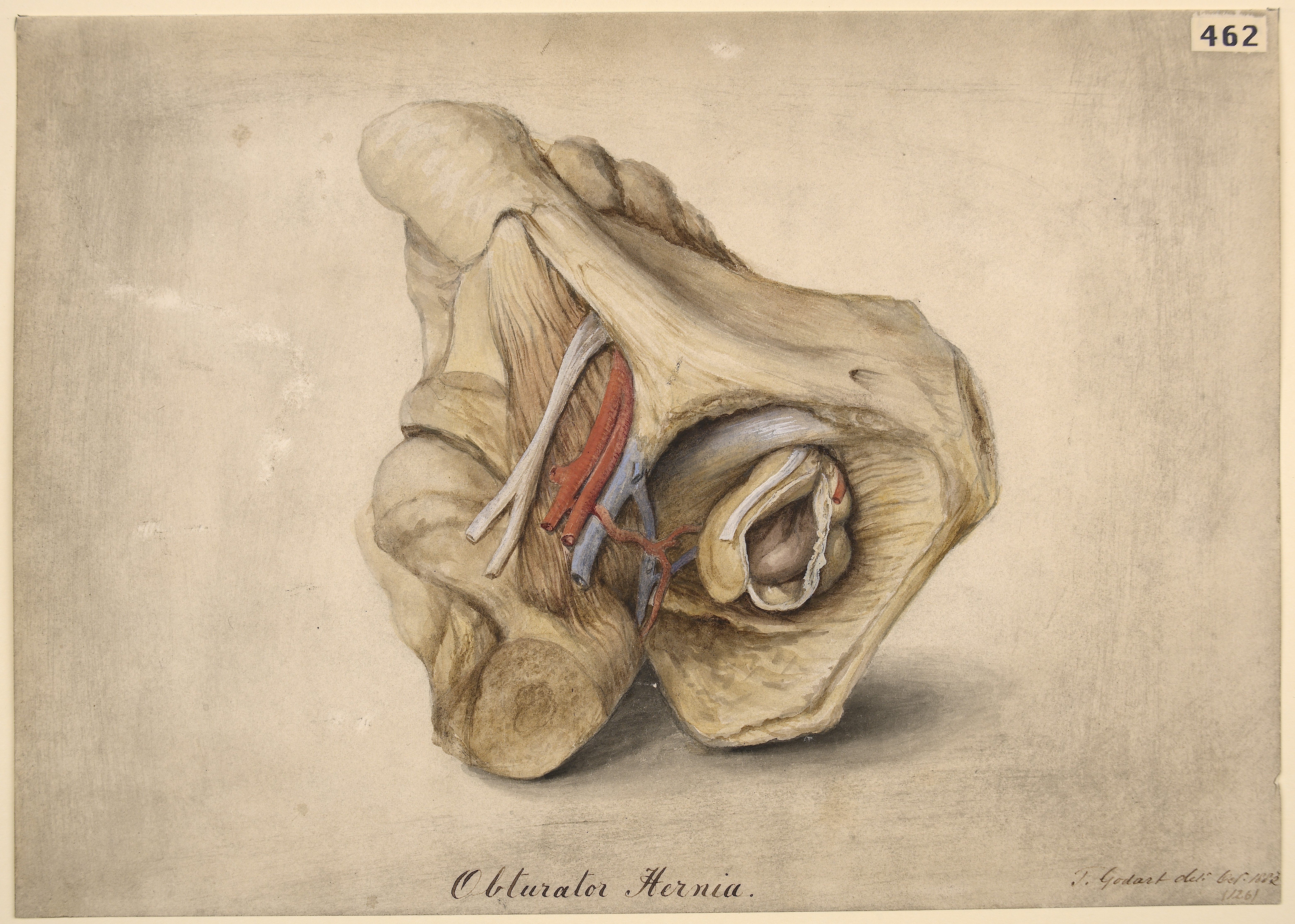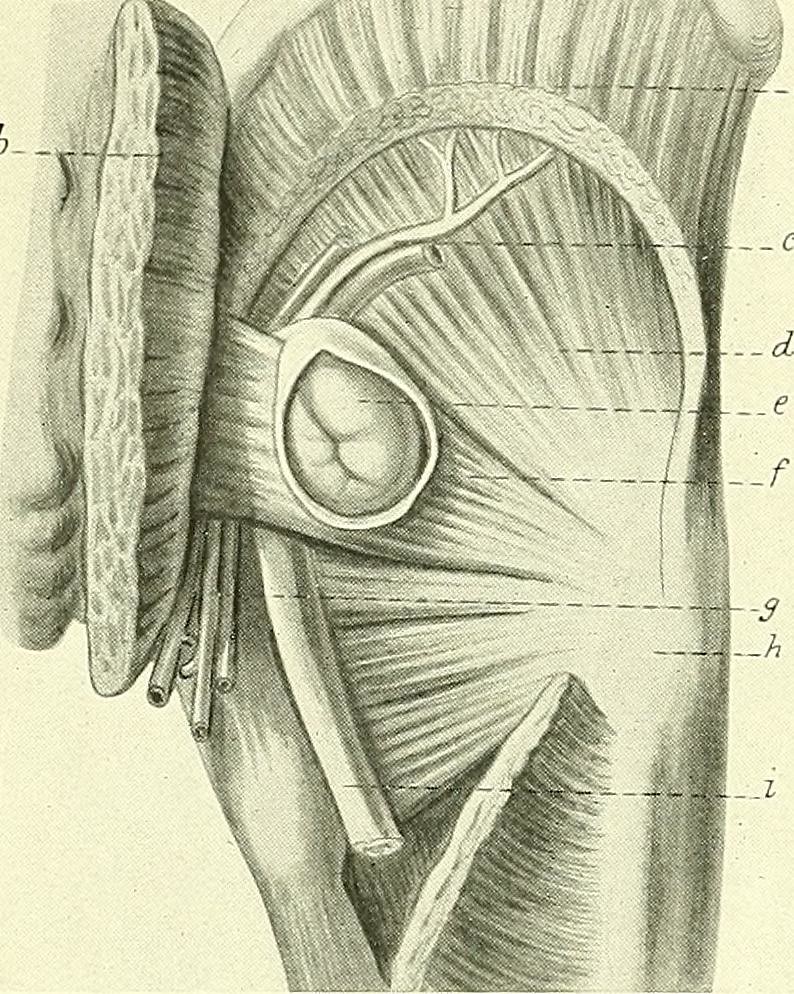[1]
Chung CC,Mok CO,Kwong KH,Ng EK,Lau WY,Li AK, Obturator hernia revisited: a review of 12 cases in 7 years. Journal of the Royal College of Surgeons of Edinburgh. 1997 Apr;
[PubMed PMID: 9114674]
Level 3 (low-level) evidence
[2]
Mnari W,Hmida B,Maatouk M,Zrig A,Golli M, Strangulated obturator hernia: a case report with literature review. The Pan African medical journal. 2019;
[PubMed PMID: 31303916]
Level 3 (low-level) evidence
[3]
Gilbert JD,Byard RW, Obturator hernia and the elderly. Forensic science, medicine, and pathology. 2019 Sep;
[PubMed PMID: 30397870]
[4]
Shapiro K,Patel S,Choy C,Chaudry G,Khalil S,Ferzli G, Totally extraperitoneal repair of obturator hernia. Surgical endoscopy. 2004 Jun;
[PubMed PMID: 15095078]
[5]
Wu JM,Lin HF,Chen KH,Tseng LM,Huang SH, Laparoscopic preperitoneal mesh repair of incarcerated obturator hernia and contralateral direct inguinal hernia. Journal of laparoendoscopic
[PubMed PMID: 17243881]
[6]
Losanoff JE,Richman BW,Jones JW, Obturator hernia. Journal of the American College of Surgeons. 2002 May;
[PubMed PMID: 12022607]
[7]
Mantoo SK,Mak K,Tan TJ, Obturator hernia: diagnosis and treatment in the modern era. Singapore medical journal. 2009 Sep;
[PubMed PMID: 19787172]
[8]
Dhital B,Gul-E-Noor F,Downing KT,Hirsch S,Boutis GS, Pregnancy-Induced Dynamical and Structural Changes of Reproductive Tract Collagen. Biophysical journal. 2016 Jul 12;
[PubMed PMID: 27410734]
[9]
Chowbey PK,Bandyopadhyay SK,Khullar R,Soni V,Baijal M,Wadhwa A,Sharma A, Endoscopic totally extraperitoneal repair for occult bilateral obturator hernias and multiple groin hernias. Journal of laparoendoscopic
[PubMed PMID: 15630949]
[10]
Glicklich M,Eliasoph J, Incarcerated obturator hernia: case diagnosed at barium enema fluoroscopy. Radiology. 1989 Jul;
[PubMed PMID: 2740520]
Level 3 (low-level) evidence
[12]
Ziegler DW,Rhoads JE Jr, Obturator hernia needs a laparotomy, not a diagnosis. American journal of surgery. 1995 Jul;
[PubMed PMID: 7793500]
[13]
Naude G,Bongard F, Obturator hernia is an unsuspected diagnosis. American journal of surgery. 1997 Jul;
[PubMed PMID: 9240957]
[14]
Ijiri R,Kanamaru H,Yokoyama H,Shirakawa M,Hashimoto H,Yoshino G, Obturator hernia: the usefulness of computed tomography in diagnosis. Surgery. 1996 Feb;
[PubMed PMID: 8571197]
[15]
Ng DC,Tung KL,Tang CN,Li MK, Fifteen-year experience in managing obturator hernia: from open to laparoscopic approach. Hernia : the journal of hernias and abdominal wall surgery. 2014 Jun;
[PubMed PMID: 23546862]
[16]
Liu J,Zhu Y,Shen Y,Liu S,Wang M,Zhao X,Nie Y,Chen J, The feasibility of laparoscopic management of incarcerated obturator hernia. Surgical endoscopy. 2017 Feb;
[PubMed PMID: 27287915]
Level 2 (mid-level) evidence
[17]
Haith LR Jr,Simeone MR,Reilly KJ,Patton ML,Moss BE,Shotwell BA, Obturator hernia: laparoscopic diagnosis and repair. JSLS : Journal of the Society of Laparoendoscopic Surgeons. 1998 Apr-Jun;
[PubMed PMID: 9876738]
[18]
Amiki M,Goto M,Tomizawa Y,Sugiyama A,Sakon R,Inoue T,Ito S,Oneyama M,Shimojima R,Hara Y,Narita K,Tachimori Y,Sekikawa K, Laparoscopic transabdominal preperitoneal hernioplasty for recurrent obturator hernia: A case report. Asian journal of endoscopic surgery. 2019 Jul 22;
[PubMed PMID: 31332930]
Level 3 (low-level) evidence
[19]
Sze Li S,Kenneth Kher Ti V, Two different surgical approaches for strangulated obturator hernias. The Malaysian journal of medical sciences : MJMS. 2012 Jan;
[PubMed PMID: 22977378]
[20]
Petrie A,Tubbs RS,Matusz P,Shaffer K,Loukas M, Obturator hernia: anatomy, embryology, diagnosis, and treatment. Clinical anatomy (New York, N.Y.). 2011 Jul;
[PubMed PMID: 21322061]
[21]
Nakayama T,Kobayashi S,Shiraishi K,Nishiumi T,Mori S,Isobe K,Furuta Y, Diagnosis and treatment of obturator hernia. The Keio journal of medicine. 2002 Sep;
[PubMed PMID: 12371643]
[22]
Arbman G, Strangulated obturator hernia. A simple method for closure. Acta chirurgica Scandinavica. 1984;
[PubMed PMID: 6377785]
[23]
Yokoyama Y,Yamaguchi A,Isogai M,Hori A,Kaneoka Y, Thirty-six cases of obturator hernia: does computed tomography contribute to postoperative outcome? World journal of surgery. 1999 Feb;
[PubMed PMID: 9880435]
Level 3 (low-level) evidence
[24]
Lo CY,Lorentz TG,Lau PW, Obturator hernia presenting as small bowel obstruction. American journal of surgery. 1994 Apr;
[PubMed PMID: 8179083]


